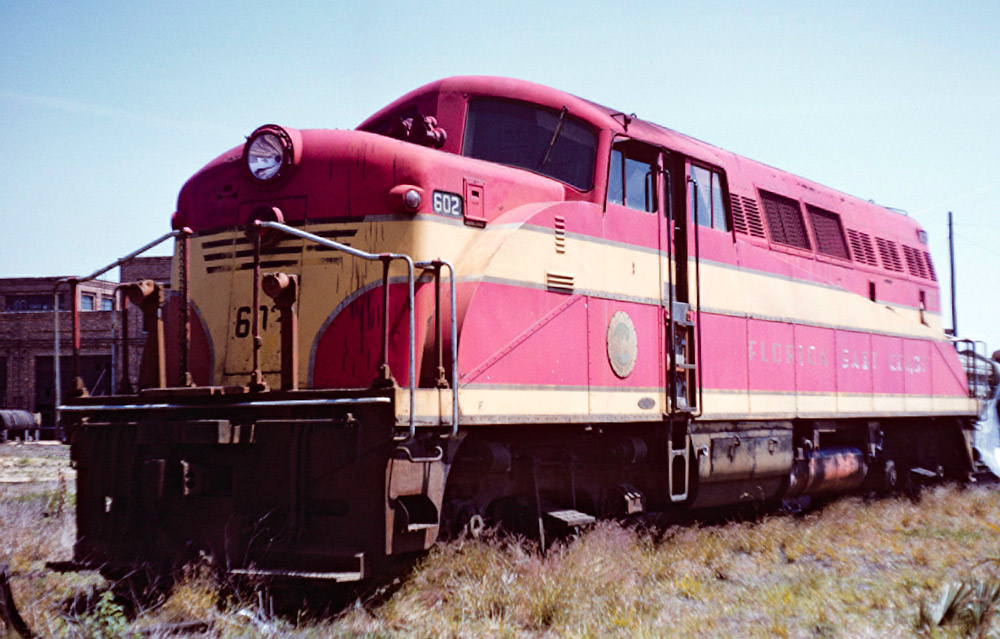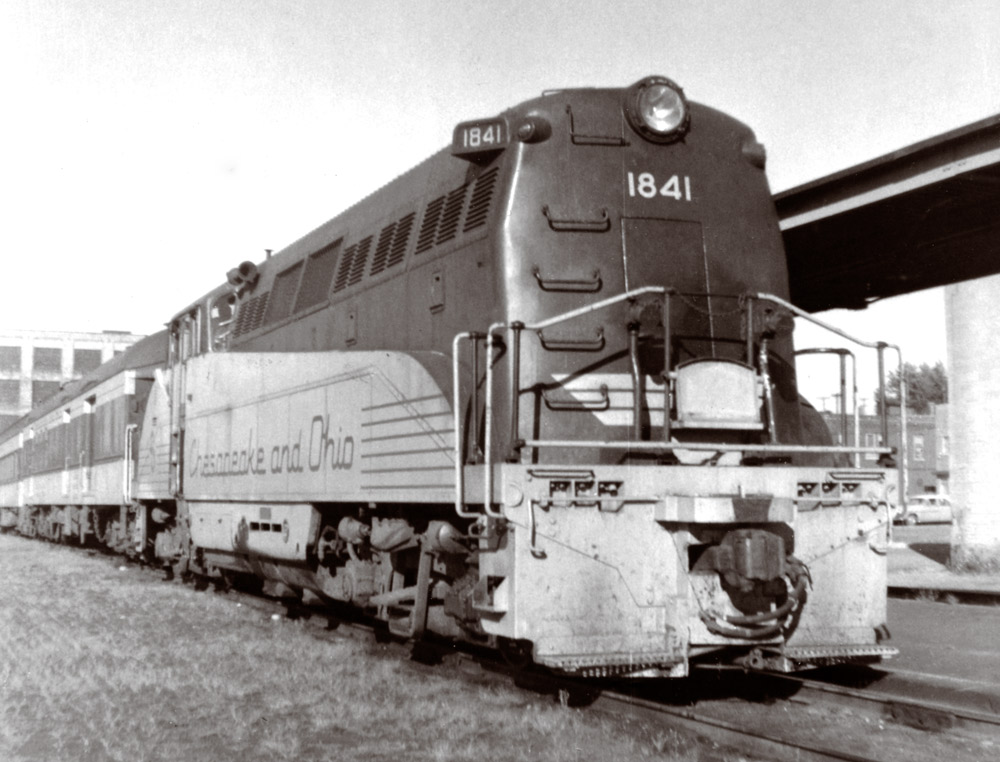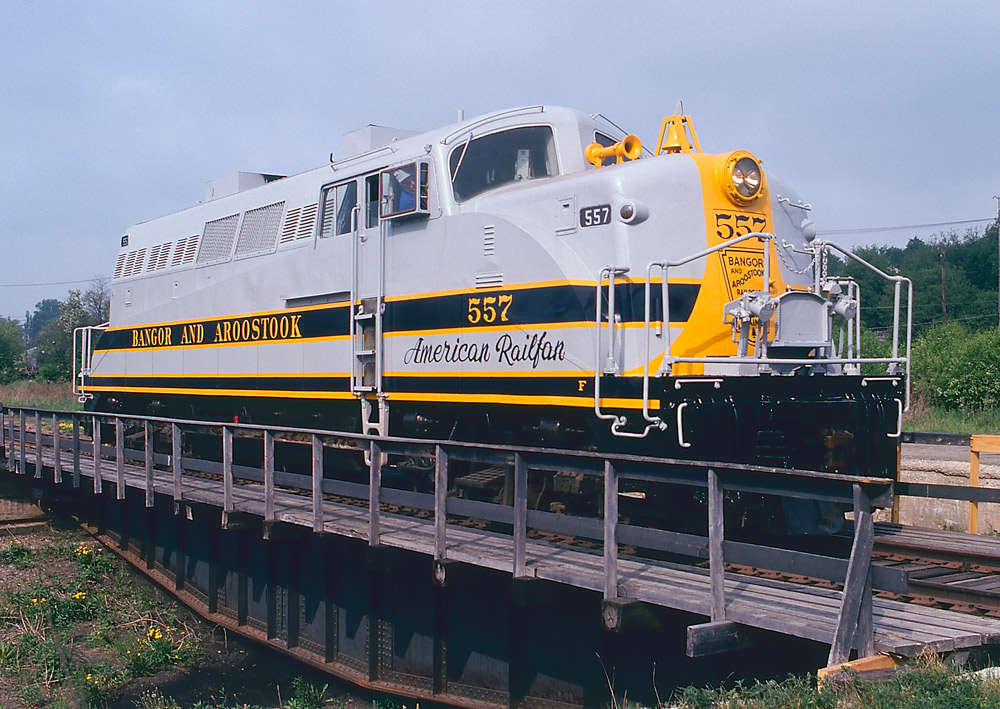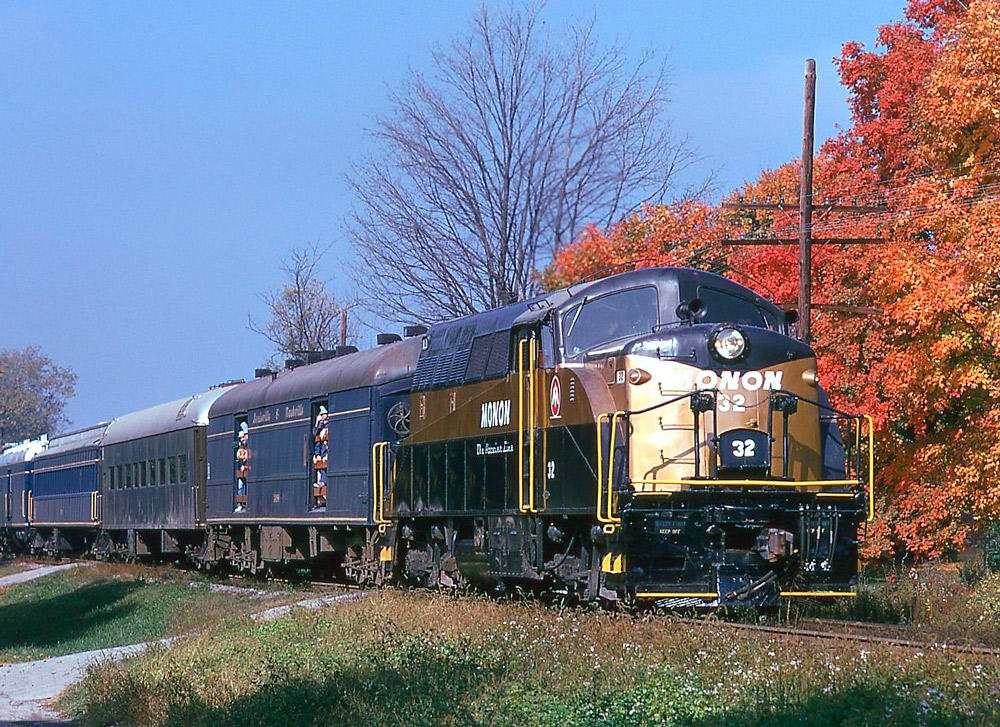The BL2 was a mistake at diesel locomotive leader EMD

R. R. Wallin photo
EMD’s BL2 diesel locomotive was a mistake of historic proportions. During the 1930s and ’40s — when diesel-locomotive sales grew from smoldering embers to white-hot inferno — Electro-Motive Corp. (after 1940, General Motors’ Electro-Motive Division) seemingly could do no wrong. With the technical and marketing might of GM behind it, EMD developed powerful, rugged diesel engines; built a state-of-the-art diesel-locomotive factory at La Grange, Ill.; and consistently fielded products that were just what the railroads needed to rid themselves of steam locomotion. The SW and NW switcher lines, E-series passenger models, and F family of (mostly) freight units constituted an all-star catalogue of success unmatched by any other builder. EMD was the leader; the others played catch-up.
But at the height of its postwar prosperity, EMD made one memorable misstep: the BL2 diesel locomotive and its prototype, the BL1. Although competitors Alco, Baldwin, and Fairbanks-Morse had begun producing road-switcher-type diesel locomotives as early as 1941, EMD was reluctant to offer one. Instead, it dressed up the innards of the 1,500-hp F3 cab unit in a semi-streamlined carbody with a beveled engine compartment to give rearward visibility and end platforms for switching work. The appearance of the unit was theoretically to make it attractive on suburban and local passenger trains.
Beauty is of course in the eye of the beholder, but few would call the design “attractive.” Trains Editor David P. Morgan had this to say after a visit to EMD’s plant in September 1947: “When I first saw the prototype BL1 on the erecting floor at EMD [. . .], I wondered if all was well.”
BL in BL2 diesel locomotive stands for “Branch Line”

David W. Richter photo
The “BL” designation stood for “Branch Line,” reflecting the unit’s intended service on secondary assignments. But railroads tend not to spend money on new power for such work, preferring instead to cascade older locomotives down to low-utilization duties. (The lone demonstrator BL1 had an air throttle and other minor mechanical differences from the production models, and was soon rebuilt to BL2 standards.)
The BL2 was not a good seller. Its complex carbody was expensive to produce, access to the engine and generator were difficult, and its lightweight frame kept it from heavy-duty service. Although carbody doors gave access to the end platforms, the arrangement was cumbersome compared to true road-switcher units.
EMD built just 59 BL locomotives, over a period spanning from February 1948 to May 1949. Nine railroads bought it: Bangor & Aroostook (8); Boston & Maine (4); Chesapeake & Ohio (14); Chicago & Eastern Illinois (2, plus the reclassified BL1 demonstrator); Florida East Coast (6); Missouri Pacific (8); Monon (9); Rock Island (5); and Western Maryland (2).
What the railroads really needed was a true road-switcher from EMD. In October 1949 they got it, when the first GP7 demonstrators rolled out of La Grange.
BL2 survivors

J. David Ingles photo
Seven BL2s survive, thanks mainly to Bangor & Aroostook and Western Maryland still operating theirs as the diesel preservation era began. By 1972, most owners had traded in their BL2s to EMD. In that year, though, occurred the first saving of a BL for posterity, as L&N donated its Monon 32, in operable condition, to the Kentucky Railway Museum. WM 81 is at the B&O Railroad Museum in Baltimore and sister 82 on the tourist line out of Elkins, W.Va. Four BAR units exist: 52 and 56 at the Hoosier Valley Railroad Museum in North Judson, Ind.; 54 on The Stourbridge Line tourist road at Honesdale, Pa.; and BAR 557 at the Cole Land Transportation Museum in Bangor, Maine.
BL2 diesel locomotive roster

J. David Ingles photo
BL1: EMD 499 (upgraded to BL2 before sale to C&EI)
BL2: BAR 550–557; B&M 1550–1553; C&O 80–85 (ordered by Pere Marquette), 1840–1847; C&EI 1600, 1601 (renumbered shortly after delivery to 200, 201), 202 (ex-EMD 499); Rock Island 425–429; FEC 601–606; MP 4104–4111; Monon 30–38; WM 80, 81.














8. A number of serious errors in this article, the most glaring being that the C&O took delivery of Nos. 1839-1847, not 1840-1847. There are two photos of CO 1839 on the COHS website archive. The next issue is the mistaken assumption by the author that this loco was ever intended to be anything other than a cheap, quickie, bandaid transition for EMD from carbody to road switcher, as evidenced by the fact that design work on the 1949 GP7 had already started by the time the 1948 BL2 was just 3 months into its production run.
It wondered me why EMD produced the BLT when Alco was successful with its RS-1 variants (including C-C export models).
They did have extended frame NW shifters. Was streamlining that important?
Keep in mind that two of the Bangor & Aroostook BL2 units as well as Atlantic Coast Line E3/6 no. 501 (currently at the North Carolina Transportation Museum in Spencer) might not exist if it weren’t for the early efforts of the late Glen Monhart, who purchased them from their respective railroads and operated them for a while out of Madison, WI. Glen also owned a three unit F locomotive consist.
Mr. Brooks were you a Lafayette native watching the Monon run down 5th street?
I worked at a business served by the Monon south of Lafayette and remember seeing these every now and then on a local or later stuck between a few road units as extra power. Didn’t think much of them then, it seemed that they got the job done and didn’t smoke as much as the Alcos.
Growing up I was all about the Monon. It ran through the streets in my town, and was responsible for my being a true train fanatic. So of course my N scale favorite unit is the Monon BL2. I think it’s a unique beauty and I am happy that a few full sized operating examples are within driving distance to my home.
Call me odd… but I’ve always liked the look of the BL2. Used to enjoy seeing the Wisconsin & Calumet BL2 (lettered Janesville & Southeastern) running south of town, “back in the day”, on it’s way to Chicago.
When the North Creek short line was still running between Saratoga and North Creek, NY several years ago (~2013), I rambled around the passenger platform at our stop in North Creek, looking at this strange diesel locomotive. Once home, I looked up diesel designs and was surprised to see that the D&H locomotive was a BL2.
Ford had its Edsel; EMD had its BL2.